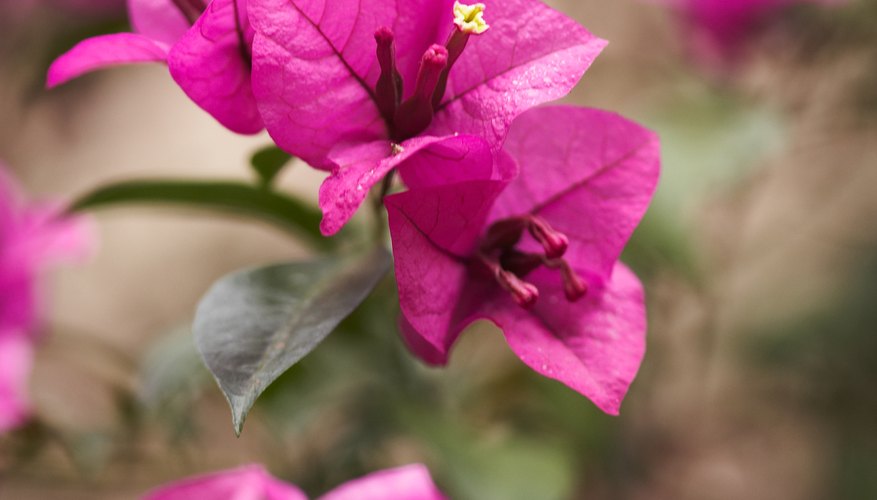Native to South America, bougainvillea is now cultivated around the world. This tough vine is popular for its brightly-coloured blooms. In fact, what appear to be the plant's exterior petals are not genuinely petals. The structure of the bougainvillea flower is complicated, with a vulnerable flower protected by colourful external structures called bracts.
Bracts
The bracts which protect bougainvillea flowers are not petals but modified leaves. The bracts around the flower have the characteristic bright colours associated with the genus; these are often purple or magenta, but can also be orange, yellow or even white. The shape, size and texture of bracts varies from species to species; in some species, most notably Bougainvillea glabra, the bracts are very thin and have a dry, papery texture.
Flowers
In a typical bougainvillea, the bracts protect a cluster of three flowers. The flowers themselves are small and white. Their characteristic shape is The bougainvillea flower is a "perfect" flower, so-called because it has both male and female reproductive structures. The flower is tubular in shape, with its small white petals appearing at the top of a long tube. This tube may be the same colour as the bracts that surround it.
- In a typical bougainvillea, the bracts protect a cluster of three flowers.
- The flower is tubular in shape, with its small white petals appearing at the top of a long tube.
Vines
Bougainvillea can grow as a potted plant, a hanging basket or as a climbing vine. Its versatility makes it popular as a hedge or trellised plant. The vine stems themselves are tough and woody. They are green in colour when young, but age into a mid-brown colour. The bougainvillea vine is protected by sharp thorns, which may be curving or straight. The thorns not only protect the plant but help it climb over other plants as it grows.
- Bougainvillea can grow as a potted plant, a hanging basket or as a climbing vine.
Leaves and fruit
Like other structures, bougainvillea leaves vary from species to species. They can vary from 4 to 13 cm in length and are typically deep green. Shapes vary between species; the most common structures are ovate, with a broad, rounded base tapering to a narrower point. Bougainvillea plants bear fruit, although it is small and can be easy to miss. The fruit is typically around 1cm or less in length and is covered by a hard, dry protective layer.
- Like other structures, bougainvillea leaves vary from species to species.
- The fruit is typically around 1cm or less in length and is covered by a hard, dry protective layer.
